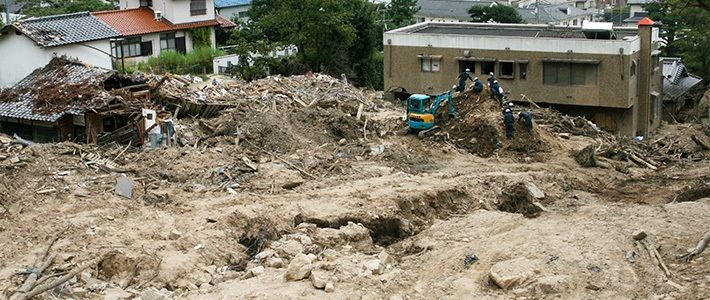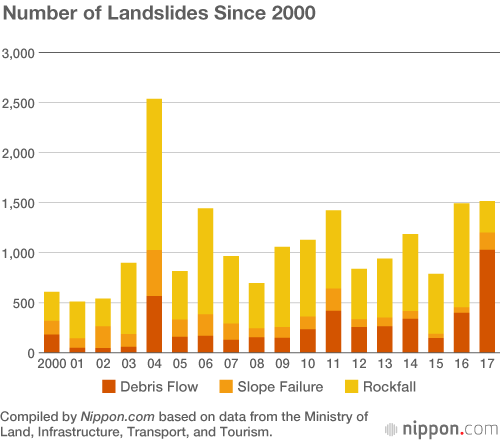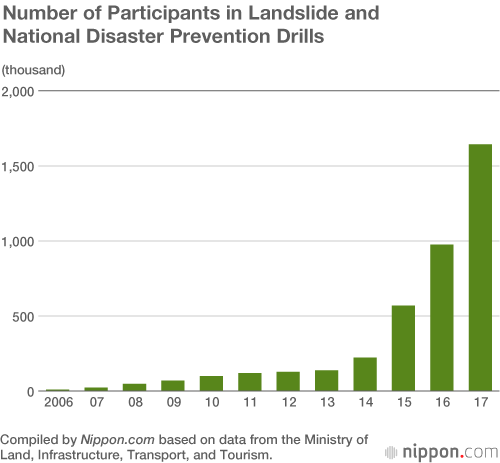
Preparing for Japan’s Inevitable Landslides
Society- English
- 日本語
- 简体字
- 繁體字
- Français
- Español
- العربية
- Русский
Three-quarters of Japan’s terrain is mountainous, while small plains located along the coastlines have unstable ground formed by alluvial deposits from rivers. Heavy rain and snow mean that the risk of landslides is always present.
According to data collected by the Ministry of Land, Infrastructure, Transport, and Tourism, 1,514 landslides occurred in 2017 with a reported 24 people dead or missing and 701 houses damaged. The figures from 2000 onward show that, on average, 1,000 landslides occur every year.

MLIT has been asking local authorities since 2006 to hold landslide and national disaster prevention drills that involve local residents. June, when rainy season starts and the danger of landslides increases, has been designated as landslide prevention month as a way to prepare for heavy rain and typhoons.
When the drills first started in 2006, only 9,000 people took part and participation was slow to rise. However, in the early morning of August 20, 2014, localized heavy rain fell in the northern part of Hiroshima Prefecture, triggering a landslide that killed 75 people. This led to a sudden increased awareness in the need to prepare for landslides. The number of participants for drills in 2015 more than doubled to 569,000. The torrential rains in northern Kyūshū in July 2017, in which 40 people lost their lives, led to a new record number of people taking part. As of May, more than 1.17 million people had participated in disaster prevention drills this year. The torrential rains in western Japan in July this year killed 220 people, increasing awareness even further. It is now forecast that there will be more than 2 million participants in total in 2018.

These disaster prevention drills involving local residents have resulted in a reduction in the amount of damage caused by landslides. In June 2017, Tōhō in Fukuoka Prefecture implemented a practical drill with 1,050 local residents, approximately half of the village population. The next month, during the heavy rains northern Kyūshū, the local residents evacuated before a landslide occurred and avoided injury.
It is widely assumed that landslides are more likely to happen in mountainous areas; however, with the Hiroshima landslide, it was a hill behind a residential area that collapsed, causing huge damage. If the terrain and climate mean landslides are inevitable, then at least efforts must be made to learn from past lessons to ensure safety and reduce damage.
(Translated from Japanese. Banner photo: Damage caused by the landslide in northern Hiroshima Prefecture, August 2014. © Jiji.)